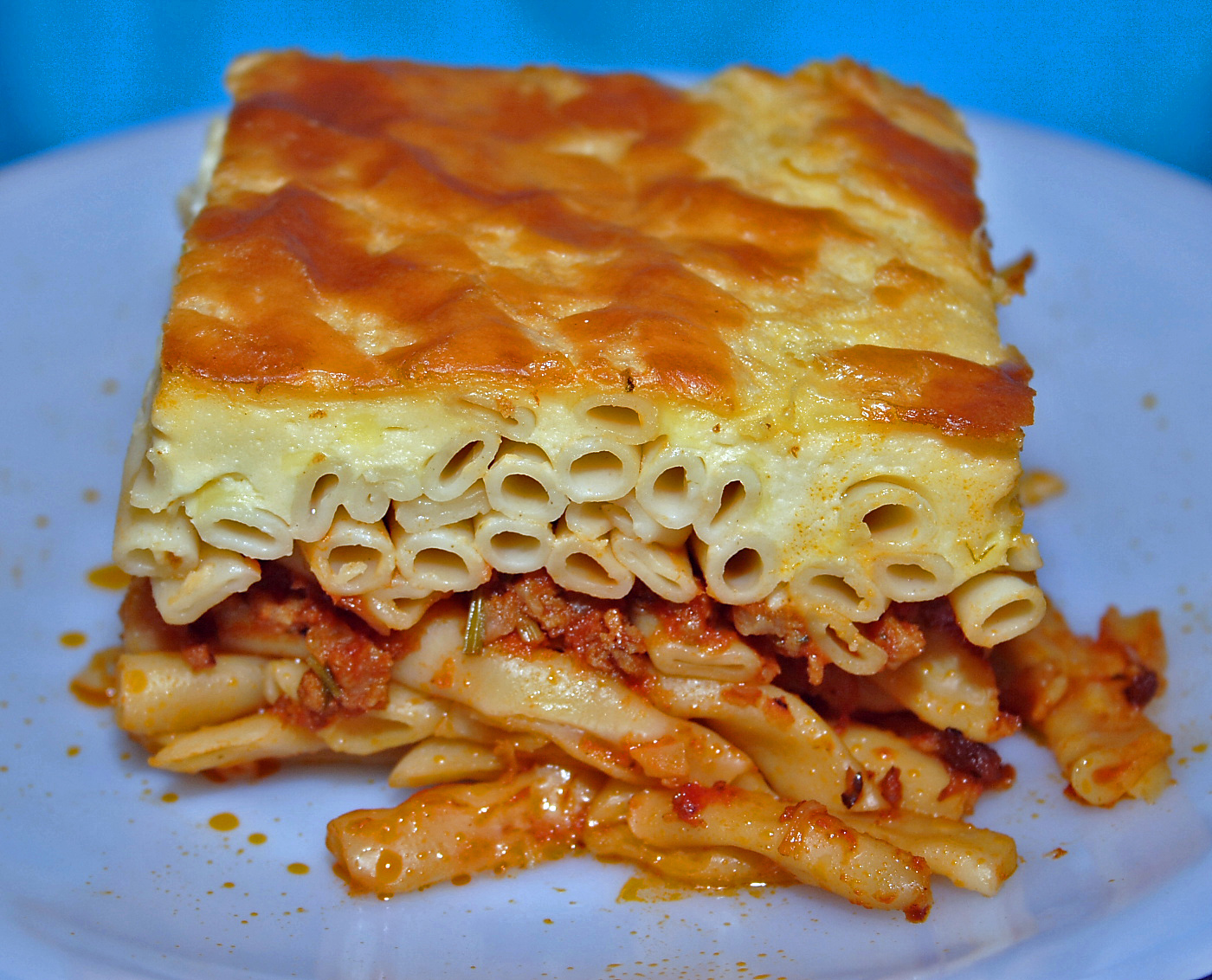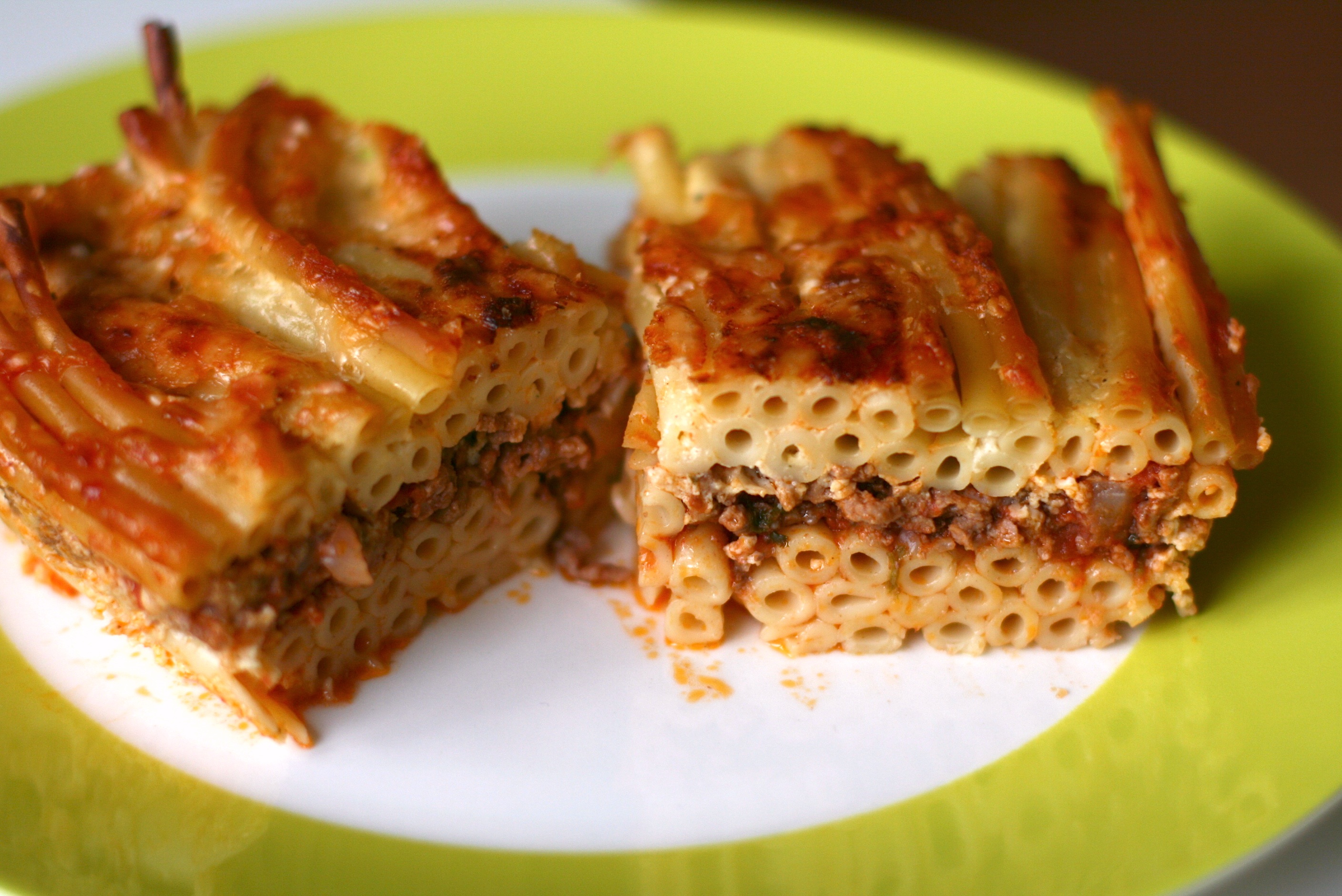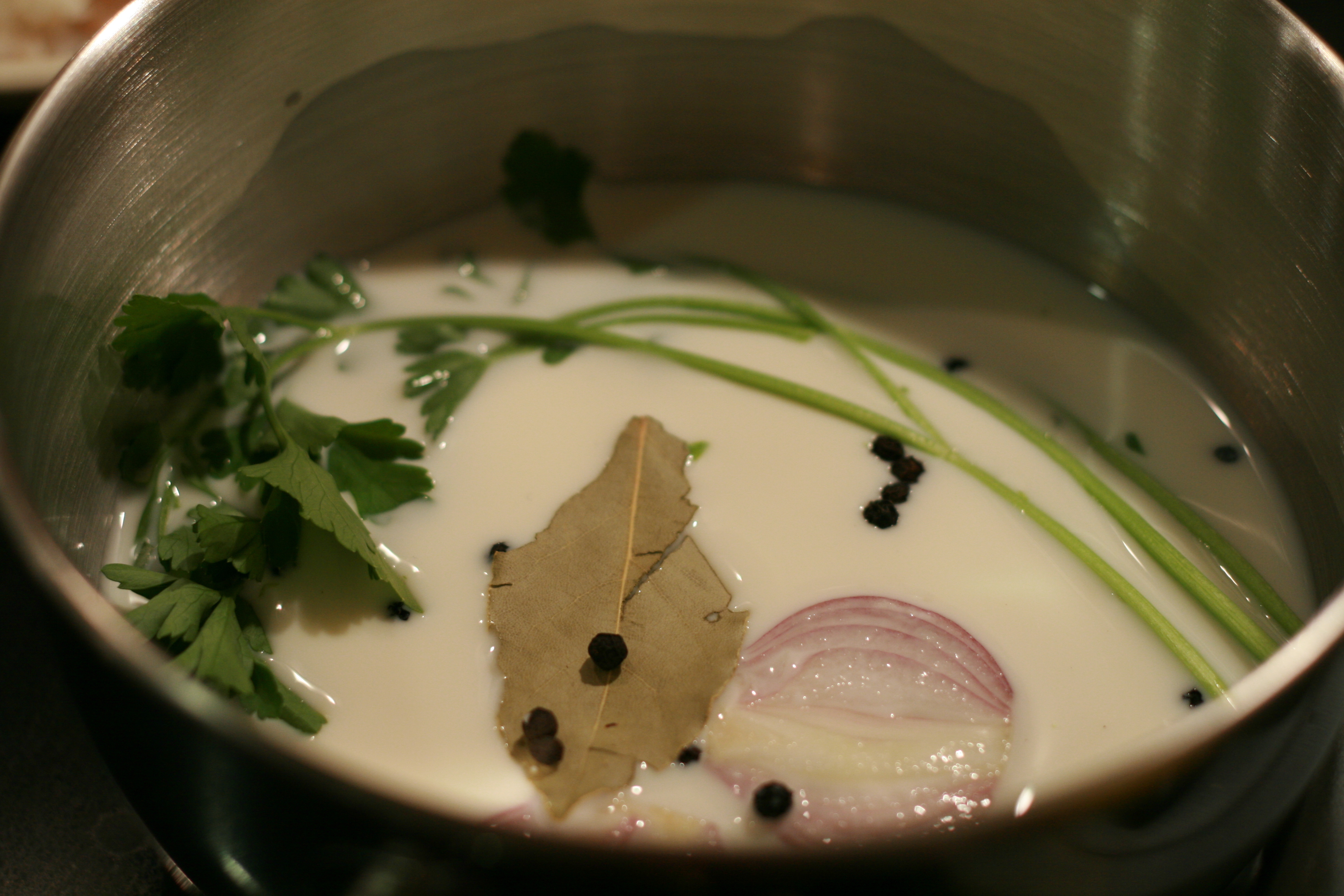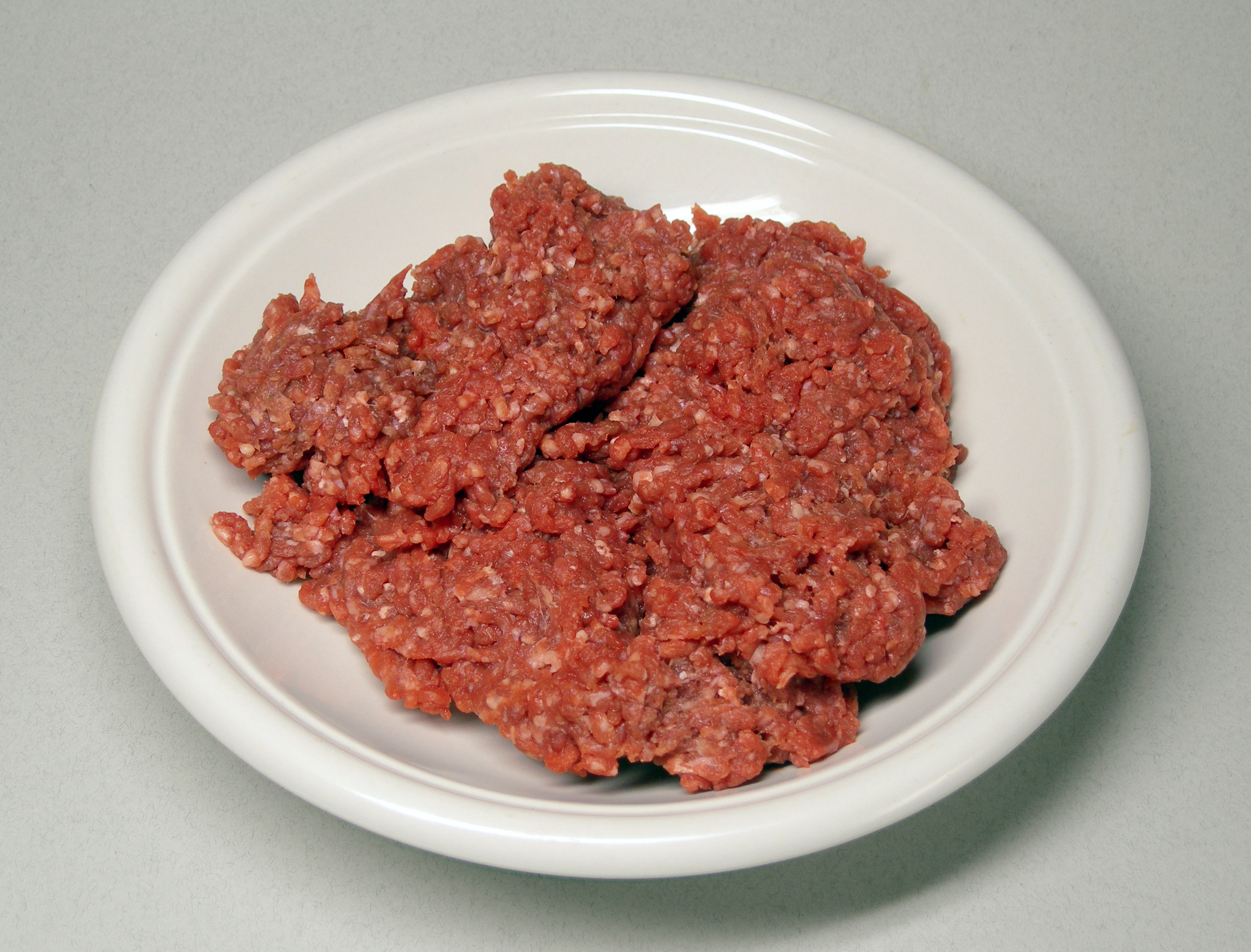|
Pastitsio
Pastitsio ( el, παστίτσιο, ''pastítsio'') is a Greek baked pasta dish with ground meat and béchamel sauce, with variations of the dish found in other countries of the Mediterranean Sea. Name and origin Pastitsio takes its name from the Italian ''pasticcio'', a large family of baked savory pies that may be based on meat, fish, or pasta, with many documented recipes from the early 16th century, and continuing to modern times. Italian versions include a pastry crust; some include béchamel. The word ''pasticcio'' is attested by the 16th century as "any manner of pastie or pye" and comes from the vulgar Latin word ''pastīcium'' derived from ''pasta'', and means "pie", and has developed the figurative meanings of "a mess", "a tough situation", or a ''pastiche''. In Egypt, it is called macarona béchamel ( arz, مكرونة بشاميل ). In the Albanian-speaking regions of the Balkans, the dish is called ''pastiçe'', deriving from ''pasticcio''. It is, however, often ... [...More Info...] [...Related Items...] OR: [Wikipedia] [Google] [Baidu] |
Pastitsio
Pastitsio ( el, παστίτσιο, ''pastítsio'') is a Greek baked pasta dish with ground meat and béchamel sauce, with variations of the dish found in other countries of the Mediterranean Sea. Name and origin Pastitsio takes its name from the Italian ''pasticcio'', a large family of baked savory pies that may be based on meat, fish, or pasta, with many documented recipes from the early 16th century, and continuing to modern times. Italian versions include a pastry crust; some include béchamel. The word ''pasticcio'' is attested by the 16th century as "any manner of pastie or pye" and comes from the vulgar Latin word ''pastīcium'' derived from ''pasta'', and means "pie", and has developed the figurative meanings of "a mess", "a tough situation", or a ''pastiche''. In Egypt, it is called macarona béchamel ( arz, مكرونة بشاميل ). In the Albanian-speaking regions of the Balkans, the dish is called ''pastiçe'', deriving from ''pasticcio''. It is, however, often ... [...More Info...] [...Related Items...] OR: [Wikipedia] [Google] [Baidu] |
Southern Europe
Southern Europe is the southern regions of Europe, region of Europe. It is also known as Mediterranean Europe, as its geography is essentially marked by the Mediterranean Sea. Definitions of Southern Europe include some or all of these countries and regions: Albania, Andorra, Bosnia and Herzegovina, Bulgaria, Croatia, Cyprus, East Thrace, Gibraltar, Greece, Italy, Kosovo, Malta, Moldova, Monaco, Montenegro, North Macedonia, Portugal, Romania, San Marino, Serbia, Slovenia, Southern France, Spain, and Vatican City (the Holy See). Southern Europe is focused on the three peninsulas located in the extreme south of the European continent. These are the Iberian Peninsula, the Italian Peninsula, Apennine Peninsula, and the Balkans, Balkan Peninsula. These three peninsulas are separated from the rest of Europe by towering mountain ranges, respectively by the Pyrenees, the Alps and the Balkan Mountains. The location of these peninsulas in the heart of the Mediterranean Sea, as well as the ... [...More Info...] [...Related Items...] OR: [Wikipedia] [Google] [Baidu] |
Macaroni
Macaroni (, Italian: maccheroni) is dry pasta shaped like narrow tubes.Oxford DictionaryMacaroni/ref> Made with durum wheat, macaroni is commonly cut in short lengths; curved macaroni may be referred to as elbow macaroni. Some home machines can make macaroni shapes but, like most pasta, macaroni is usually made commercially by large-scale extrusion. The curved shape is created by different speeds of extrusion on opposite sides of the pasta tube as it comes out of the machine. The word "macaroni" is often used synonymously with elbow-shaped macaroni, as it is the variety most often used in macaroni and cheese recipes. In Italy and other countries, the noun ''maccheroni'' can refer to straight, tubular, square-ended ''pasta corta'' ("short-length pasta") or to long pasta dishes, as in ''maccheroni alla chitarra'' and ''frittata di maccheroni'', which are prepared with long pasta like spaghetti. In the United States, federal regulations define three different shapes of dried pa ... [...More Info...] [...Related Items...] OR: [Wikipedia] [Google] [Baidu] |
Béchamel Sauce
Bechamel sauce ( ) is a sauce traditionally made from a white roux (butter and flour in a 1:1 mixture by weight) and milk. Bechamel may also be referred to as besciamella (Italy), besamel (Greece), or white sauce (U.S.). French, Italian and Greek bechamel sauce recipes include salt and nutmeg as a seasoning base. Bechamel sauce is one of the "mother sauces" of French cuisine. Origin The first recipe of a sauce similar to bechamel is in the book by François Pierre de La Varenne in 1651, made with a roux, as in modern recipes. The name of the sauce was given in honour of Louis de Béchameil, a financier who held the honorary post of chief steward to King Louis XIV of France in the 17th century. The first named béchamel sauce appears in ''The Modern Cook,'' written by Vincent La Chapelle and published in 1733, in which the following recipe for "Turbots (a la Bechameille)" appears: There are many legends regarding the origin of bechamel sauce. For example, it is said that ... [...More Info...] [...Related Items...] OR: [Wikipedia] [Google] [Baidu] |
Allspice
Allspice, also known as Jamaica pepper, myrtle pepper, pimenta, or pimento, is the dried unripe berry (botany), berry of ''Pimenta dioica'', a Canopy (forest), midcanopy tree native to the Greater Antilles, southern Mexico, and Central America, now cultivated in many warm parts of the world. The name ''allspice'' was coined as early as 1621 by the English, who valued it as a spice that combined the flavours of cinnamon, nutmeg, and clove. Several unrelated fragrant shrubs are called "Carolina allspice" (''Calycanthus floridus''), "Japanese allspice" (''Chimonanthus praecox''), or "wild allspice" (''Lindera benzoin''). Production Allspice is the dried fruit of the ''Pimenta dioica'' plant. The fruits are picked when green and unripe, and are traditionally Drying (food), dried in the sun. When dry, they are brown and resemble large, smooth Black pepper, peppercorns. Fresh leaves are similar in texture to Bay Laurel, bay leaves and similarly used in cooking. Leaves and wood are o ... [...More Info...] [...Related Items...] OR: [Wikipedia] [Google] [Baidu] |
Nutmeg
Nutmeg is the seed or ground spice of several species of the genus ''Myristica''. ''Myristica fragrans'' (fragrant nutmeg or true nutmeg) is a dark-leaved evergreen tree cultivated for two spices derived from its fruit: nutmeg, from its seed, and mace, from the seed covering. It is also a commercial source of an essential oil and nutmeg butter. Conifers of the genus ''Torreya'', commonly known as the nutmeg yews, have edible seeds of similar appearance, but are not closely related to ''Myristica fragrans'', and are not used as a spice. Indonesia is the main producer of nutmeg and mace. If consumed in amounts exceeding its typical use as a spice, nutmeg powder may produce allergic reactions, cause contact dermatitis, or have psychoactive effects. Although used in traditional medicine for treating various disorders, nutmeg has no scientifically confirmed medicinal value. Common nutmeg Nutmeg is the spice made by grinding the seed of the fragrant nutmeg tree (''Myristica fragra ... [...More Info...] [...Related Items...] OR: [Wikipedia] [Google] [Baidu] |
Cloves
Cloves are the aromatic flower buds of a tree in the family Myrtaceae, ''Syzygium aromaticum'' (). They are native to the Maluku Islands (or Moluccas) in Indonesia, and are commonly used as a spice, flavoring or fragrance in consumer products, such as toothpaste, soaps, or cosmetics. Cloves are available throughout the year owing to different harvest seasons across various countries. Etymology The word ''clove'', first used in English in the 15th century, derives via Middle English ''clow of gilofer'', Anglo-French ''clowes de gilofre'' and Old French ''clou de girofle'', from the Latin word ''clavus'' "nail". The related English word ''gillyflower'', originally meaning "clove", derives via said Old French ''girofle'' and Latin ''caryophyllon'', from the Greek ''karyophyllon'' "clove", literally "nut leaf". Botanical features The clove tree is an evergreen that grows up to tall, with large leaves and crimson flowers grouped in terminal clusters. The flower buds initially ... [...More Info...] [...Related Items...] OR: [Wikipedia] [Google] [Baidu] |
Cinnamon
Cinnamon is a spice obtained from the inner bark of several tree species from the genus ''Cinnamomum''. Cinnamon is used mainly as an aromatic condiment and flavouring additive in a wide variety of cuisines, sweet and savoury dishes, breakfast cereals, snack foods, bagels, teas, and traditional foods. The aroma and flavour of cinnamon derive from its essential oil and principal component, cinnamaldehyde, as well as numerous other constituents including eugenol. Cinnamon is the name for several species of trees and the commercial spice products that some of them produce. All are members of the genus ''Cinnamomum'' in the family Lauraceae. Only a few ''Cinnamomum'' species are grown commercially for spice. ''Cinnamomum verum'' (AKA ''C. zeylanicum''), known as "Ceylon cinnamon" after its origins in Sri Lanka (formerly Ceylon), is considered to be "true cinnamon", but most cinnamon in international commerce is derived from four other species, usually and more correctly refe ... [...More Info...] [...Related Items...] OR: [Wikipedia] [Google] [Baidu] |
Tomato
The tomato is the edible berry of the plant ''Solanum lycopersicum'', commonly known as the tomato plant. The species originated in western South America, Mexico, and Central America. The Mexican Nahuatl word gave rise to the Spanish word , from which the English word ''tomato'' derived. Its domestication and use as a cultivated food may have originated with the indigenous peoples of Mexico. The Aztecs used tomatoes in their cooking at the time of the Spanish conquest of the Aztec Empire, and after the Spanish encountered the tomato for the first time after their contact with the Aztecs, they brought the plant to Europe, in a widespread transfer of plants known as the Columbian exchange. From there, the tomato was introduced to other parts of the European-colonized world during the 16th century. Tomatoes are a significant source of umami flavor. They are consumed in diverse ways: raw or cooked, and in many dishes, sauces, salads, and drinks. While tomatoes are fruits� ... [...More Info...] [...Related Items...] OR: [Wikipedia] [Google] [Baidu] |
Ground Pork
Ground meat, called mince or minced meat outside North America, is meat finely chopped by a meat grinder or a chopping knife. A common type of ground meat is ground beef, but many other types of meats are prepared in a similar fashion, including pork, veal, lamb, goat meat, and poultry. Dishes Ground meat is used in a wide variety of dishes, by itself, or mixed with other ingredients. It may be formed into meatballs which are then fried, baked, steamed, or braised. They may be cooked on a skewer to produce dishes such as '' adana kebabı'' and ''ćevapi''. It may be formed into patties which are then grilled or fried (hamburger), breaded and fried (''menchi-katsu'', Pozharsky cutlet), or braised (Salisbury steak). It may be formed into meatloaves or pâtés and baked. It may also be used as a filling or stuffing for meat pies and ''böreks'', and also as stuffing. It may be made into meat sauce such as ragù, which in turn is used in dishes like pastitsio and moussaka, or ... [...More Info...] [...Related Items...] OR: [Wikipedia] [Google] [Baidu] |
Ground Beef
Ground beef, minced beef or beef mince is beef that has been finely chopped with a knife, meat grinder (American English), mincer or mincing machine (British English). It is used in many recipes including hamburgers, bolognese sauce, meatloaf, meatballs and kofta. It is not the same as mincemeat, which is a mixture of chopped dried fruit, distilled spirits, spices and historically (but nowadays rare) minced/ground meat. Contents In many countries, food laws define specific categories of ground beef and what they can contain. For example, in the United States, beef fat may be added to hamburger but not to ground beef if the meat is ground and packaged at a USDA-inspected plant.These rules only apply to meat being sold across state lines. In the U.S., much ground beef is produced at local grocery stores and is not sold across state lines. In these cases, the laws of the local state apply; state laws may have different requirements. In the U.S., a maximum of 30% fat by weight ... [...More Info...] [...Related Items...] OR: [Wikipedia] [Google] [Baidu] |
Beef
Beef is the culinary name for meat from cattle (''Bos taurus''). In prehistoric times, humankind hunted aurochs and later domesticated them. Since that time, numerous breeds of cattle have been bred specifically for the quality or quantity of their meat. Today, beef is the third most widely consumed meat in the world, after pork and poultry. As of 2018, the United States, Brazil, and China were the largest producers of beef. Beef can be prepared in various ways; cuts are often used for steak, which can be cooked to varying degrees of doneness, while trimmings are often ground or minced, as found in most hamburgers. Beef contains protein, iron, and vitamin B12. Along with other kinds of red meat, high consumption is associated with an increased risk of colorectal cancer and coronary heart disease, especially when processed. Beef has a high environmental impact, being a primary driver of deforestation with the highest greenhouse gas emissions of any agricultural product. ... [...More Info...] [...Related Items...] OR: [Wikipedia] [Google] [Baidu] |









